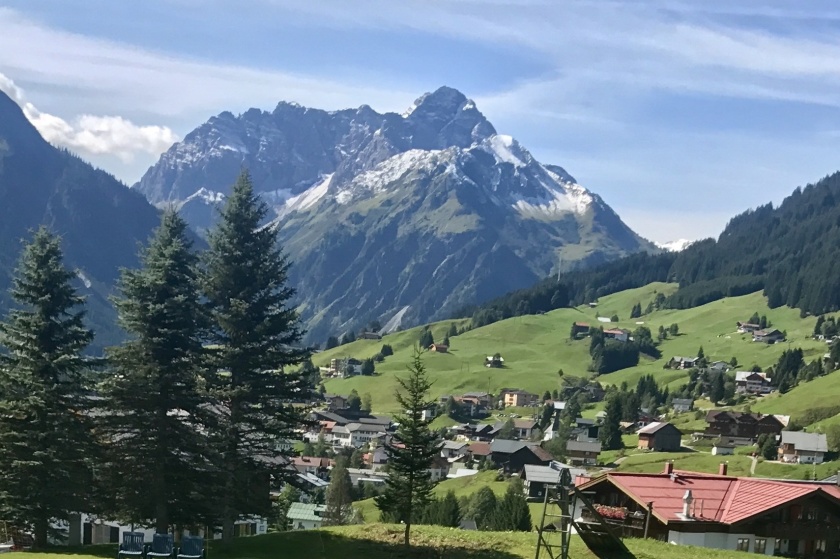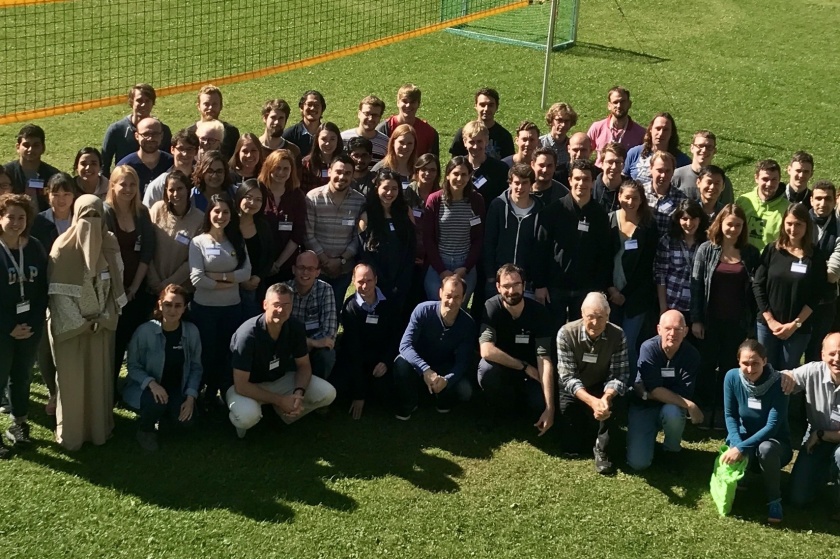Registration for Summer School Quantsol is now open!

The Quantsol will be held from 2. to 9. September 2018 in Hirschegg, Kleinwalsertal, Austria.
© K.Lips /HZB

Learning about solar fuels and photovoltaics goes green: Last year’s Quantsol students came from all over the world to meet solar energy experts in the Austrian Alps. The location offers space for 56 students. © K. Lips /HZB
It is already the eleventh time that the International Summer School on Photovoltaics and New Concepts of Quantum Solar Energy Conversion (Quantsol) will be held from 2. to 9. September 2018 in Hirschegg, Kleinwalsertal, Austria. The school is organized by the Helmholtz-Zentrum Berlin and the Technical University of Ilmenau. Applications can be submitted through the school’s homepage until May 18th , 2018.
“The Quantsol summer school offers a very comprehensive introduction to the field of photovoltaics and photocatalysis and is a great learning experience and a “must attend” for PhD students and postdocs in their early career. In the past, we have received an overwhelmingly positive feedback leading to oversubscription of the school every year” says Prof. Dr. Klaus Lips from Helmholtz-Zentrum Berlin.
Invited speakers, all internationally recognized scientists from leading world institutions, will give lectures covering topics on the fundamental principles of the conversion of solar energy into chemical and electrical energy as well as the physical and technical challenges of their technological implementation. Another focus lies on solar-specific material science and their characterization. In addition, the school will give hands-on training on how to build your own solar cell as well as an introduction to solar cell simulation.
If you are interested to participate in the Quantsol Summer School you can find much more detailed information on our homepage or in our flyer (download right).
The deadline for application is May 18, 2018.
Here you get directly to the application form.
If you will not be able to attend this years’ Quantsol summer school – no worries - the next school has already scheduled for September 1 to 8, 2019.
HZB
https://www.helmholtz-berlin.de/pubbin/news_seite?nid=14810;sprache=en
- Copy link
-
Optical innovations for solar modules - which are the most promising?
In 2023, photovoltaic systems generated more than 5% of the world’s electrical energy and the installed capacity doubles every two to three years. Optical technologies can further increase the efficiency of solar modules and open up new applications, such as coloured solar modules for facades. Now, 27 experts provide a comprehensive overview of the state of research and assess the most promising innovations. The report, which is also of interest to stakeholders in funding and science management, was coordinated by HZB scientists Prof. Christiane Becker and Dr. Klaus Jäger.
-
Samira Aden joins ETIP PV - The European Technology & Innovation Platform for Photovoltaics ESG Working Group
Samira Jama Aden, Architect Design Research, has joined the ETIP PV - The European Technology & Innovation Platform for Photovoltaics working group “Environmental, Social and Governance (ESG)”.
-
BESSY II: Magnetic ‘microflowers’ enhance magnetic fields locally
A flower-shaped structure only a few micrometres in size made of a nickel-iron alloy can concentrate and locally enhance magnetic fields. The size of the effect can be controlled by varying the geometry and number of 'petals'. This magnetic metamaterial developed by Dr Anna Palau's group at the Institut de Ciencia de Materials de Barcelona (ICMAB) in collaboration with her partners of the CHIST-ERA MetaMagIC project, has now been studied at BESSY II in collaboration with Dr Sergio Valencia. Such a device can be used to increase the sensitivity of magnetic sensors, to reduce the energy required for creating local magnetic fields, but also, at the PEEM experimental station, to study samples under much higher magnetic fields than currently possible.
